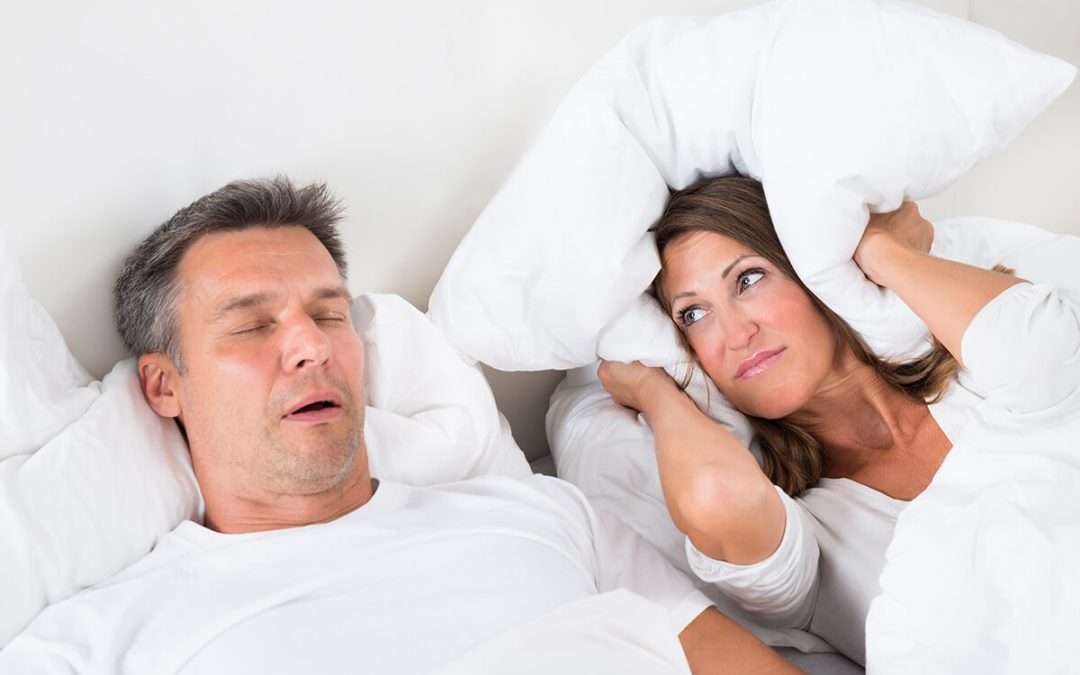Obstructive sleep apnea (OSA) is a problem. Although it is quite a noisy problem – all that snoring and gasping – the complications it can cause are silent. OSA is linked with cardiovascular issues such as heart failure, high blood pressure, and stroke, as well as headaches, poor cognitive functioning, diabetes, and depression. Additionally, OSA is associated with a higher risk of accidents on the road or in the workplace from a poor night’s rest. It therefore stands to reason that OSA – and all that snoring and gasping – should not be ignored.
Obstructive Sleep Apnea, CPAP, and Surgery
OSA is a common form of sleep-disordered breathing during which the tissues of the upper airways collapse during sleep, blocking off airflow. This results in an event called an apnea, which is a momentary pause in oxygen intake.
Continuous positive airway pressure (CPAP) therapy is considered the first-line treatment for moderate to severe OSA but, as many a doctor can attest, tends to be met with low compliance from patients. Some reasons for this poor adherence to CPAP therapy include skin inflammation from the mask, a sense of claustrophobia, or nasal congestion.
For patients who aren’t keen on CPAP, surgery can be an option. The most common surgical procedure is a uvulopalatopharyngoplasty, which involves removing excess tissue from the soft palate and back of the throat. Though surgery for OSA can be very effective, all surgical procedures are associated with a degree of risk. Complications of surgery for OSA can include a reaction to the anesthesia, blood clots, excessive bleeding, pain, and tongue dysfunction. OSA can also recur after initially being successfully treated with surgery.
4 Non-Surgical, Non-CPAP Treatments for OSA
If the idea of surgery to your throat or wearing a CPAP mask every night sounds unappealing, fortunately there are other options to manage OSA and keep that all-important oxygen flowing.
1) Lifestyle changes
Lifestyle modifications may seem too trivial to make any real difference, yet studies demonstrate that changing these habits can have a positive impact.
Obesity is one of the greatest risk factors for developing OSA, making weight reduction an important strategy in managing this sleep-disordered breathing condition. Other steps you can take is to minimize your alcohol consumption and avoid tobacco products. Some people find that adjusting their sleeping position to a side-lying posture or being slightly propped up can help with preventing the airways from collapsing.
2) Nerve stimulation devices
Electrical stimulation of the hypoglossal nerve innervating the tongue muscle is a more novel option for treating OSA. A monitoring device is implanted in the chest with a nerve stimulator implanted under the chin. Stimulation of the tongue with electrical impulses keeps the tongue forward in the mouth, preventing it from dropping backwards and obstructing the throat during sleep. As of 2023, the only such implant currently approved by the FDA in the US is a device called Inspire.
3) Myofunctional therapy
Also known, in one particular study, as playing the didgeridoo. Yes, the didgeridoo, that hollowed-out log played as a musical instrument by indigenous Australians by blowing through one end with a technique called circular breathing. Researchers reported a significant improvement in sleep apnea scores (known as the apnea-hypopnea index) and daytime fatigue in study participants who practiced using the didgeridoo around 25 minutes a day, 6 days a week. In theory, the technique of circular breathing strengthens the muscles of the upper airway, improving muscle tone and decreasing the likelihood of these tissues collapsing during sleep.
4) Mouth guards or splints
For cases of mild to moderate OSA, an oral appliance such as a mouth guard or splint, may be sufficient treatment. These appliances aim to address structural issues that contribute to OSA, such as a small lower jaw. Oral appliances for OSA can be designed to push the lower jaw forward (these are known as mandibular advancement devices), prevent the tongue from falling backwards (tongue-retaining devices), or raise the soft palate and uvula structures at the back of the throat (soft palate lifters). Mouth guards and splints for OSA are typically custom-fitted.
Finding the right approach to managing OSA is best done with a qualified doctor. In some cases, you may start with your primary care physician and end up with an otolaryngologist (ear, nose, throat specialist), neurologist, pulmonologist (lung specialist), cardiologist (heart specialist), psychiatrist, or all the above. Wherever you begin, remember that obstructive sleep apnea might be noisy on the surface, but it’s the silent complications that get you – don’t ignore it!

